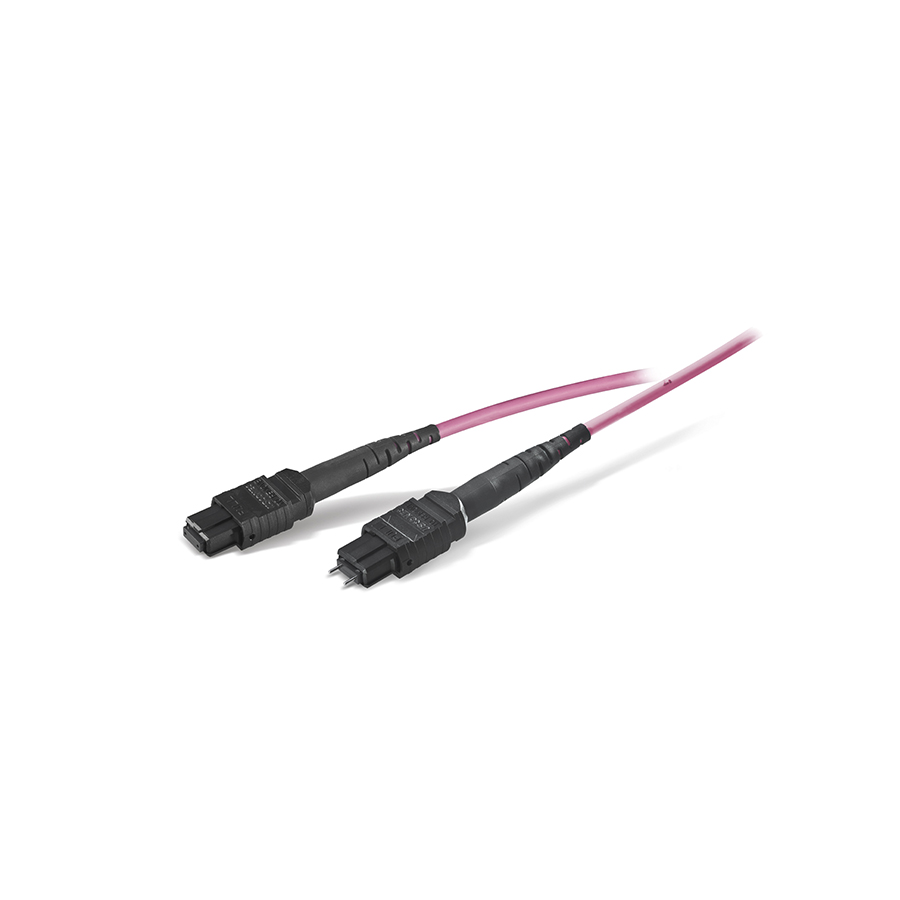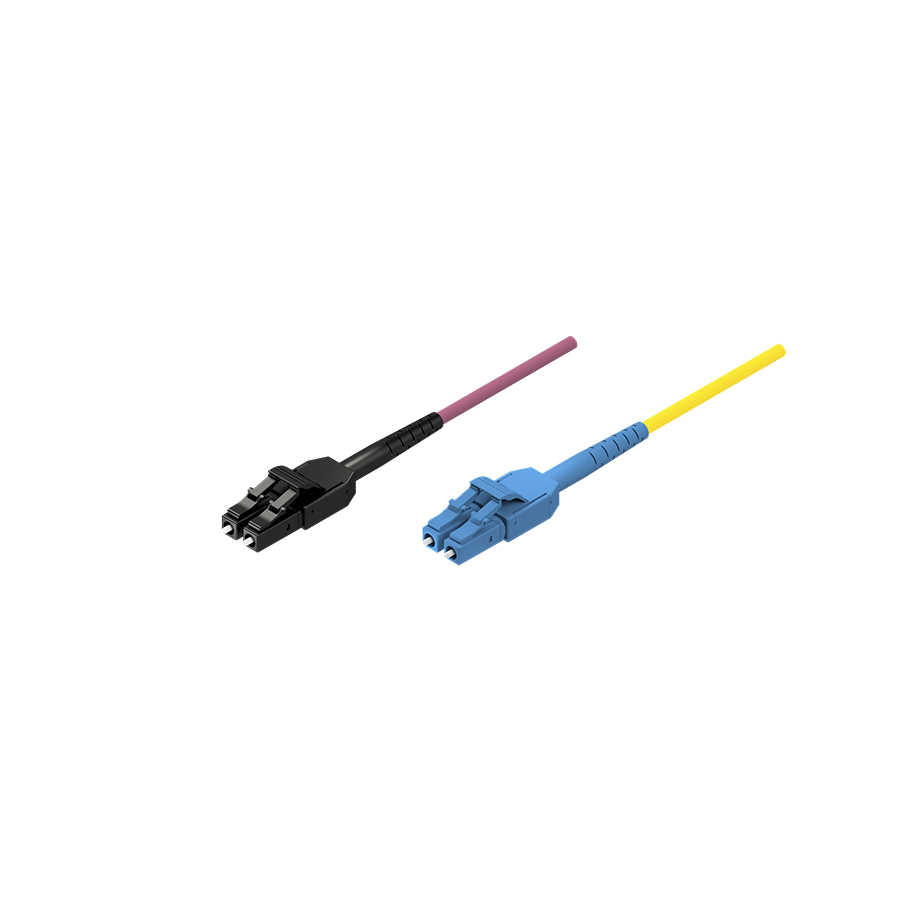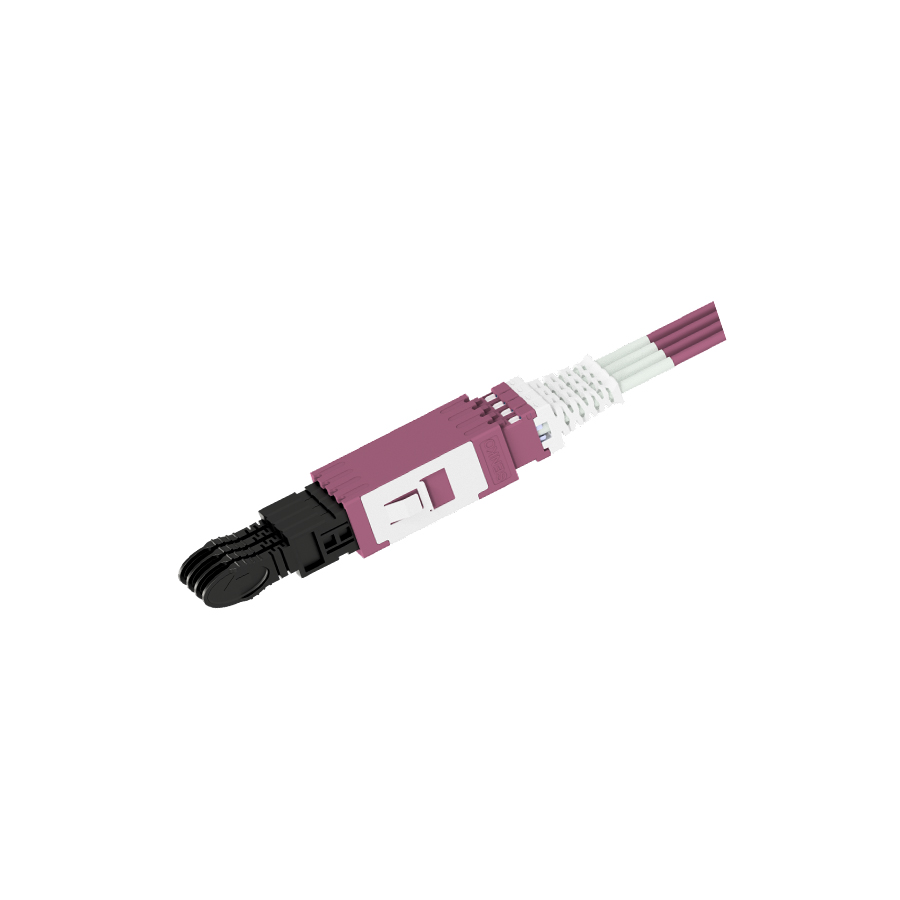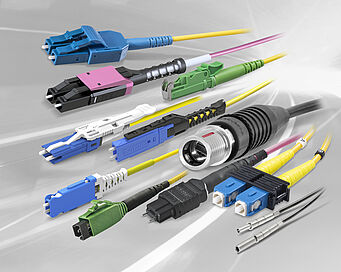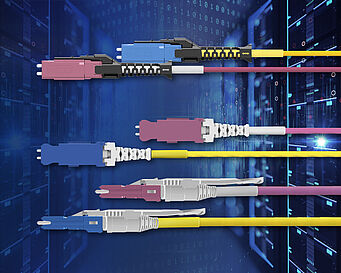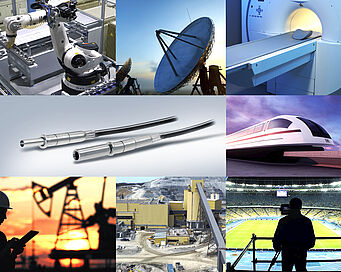Description of the fiber-optic connectors
MPO/MTP® connectors
MPO stands for “Multi-fibre Push-on Connector”. It is a push-on connector for multifiber cables consisting generally of 6, 8, 12 or 24 fibers. The MPO connector is also often referred to as an MTP® push-on connector, with MTP® being a registered trademark of US Conec Ltd. These push-on connectors are in widespread use in modern data centers because they represent a space-saving way of achieving high data transmission speeds.
LC connectors
The LC is a small-form-factor connector system for optical fiber cabling as defined in standard DIN EN 61754-20. It is available for both singlemode and multimode applications and can be supplied as an LC/PC or LC/APC variant. The LC/APC connector has a higher return loss, making it the preferred solution for singlemode cables. The most recent generation of LC Compact connectors has a compact end housing which protects the fibers and permits reliable strain relief for various cable types.
MDC connectors
The MDC (Miniature Duplex Connector) from US Conec is a genuine push-pull-boot duplex push-on connector and is standardized in IEC 61754-37. It is manufactured on the basis of 1.25-mm fully-ceramic ferrule technology and belongs to the category of Very Small Form Factor (VSFF) push-on connectors. Among other applications, it is used as an optical interface push-on connector for SFP-DD, OSFP and QSFP-DD transceivers and both the singlemode and multimode versions are available as MDC/PC and MDC/APC variants.
SN® connectors
The SN® (Senko Nano) from Senko is a genuine push-pull-boot duplex push-on connector and is standardized as an SAC connector in IEC 61754-36. It is manufactured on the basis of 1.25-mm fully-ceramic ferrule technology and belongs to the category of Very Small Form Factor (VSFF) push-on connectors. Among other applications, it was developed for use as an optical interface push-on connector for SFP-DD, OSFP and QSFP-DD transceivers and both the singlemode and multimode versions are available as SN®/PC and SN®/APC variants.



